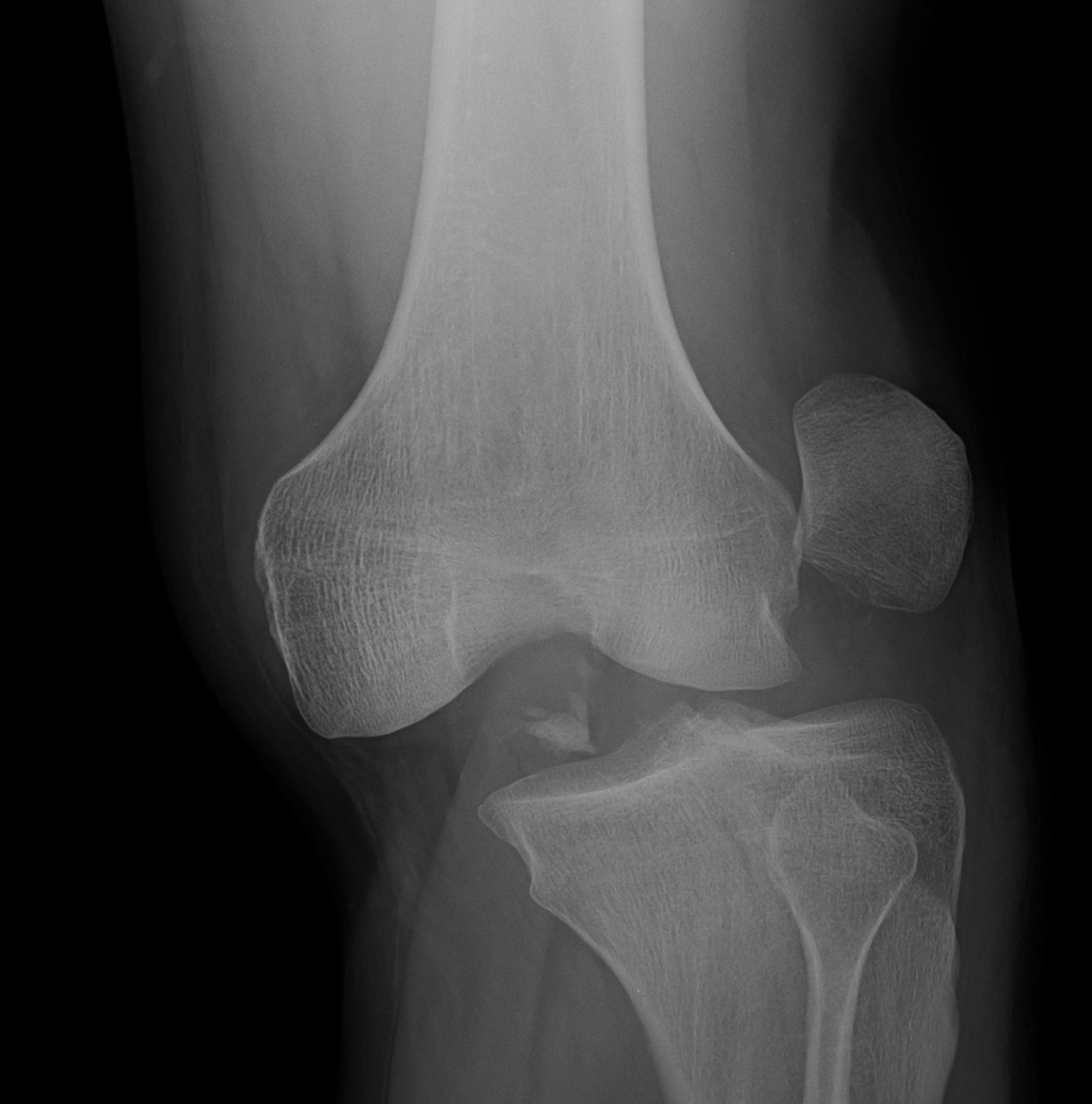
Over half of all knee dislocations are the result of high-speed motor vehicle accidents and are associated with multiple injuries in approximately 30% of cases. A knee dislocation is an obvious diagnosis when the knee is still dislocated but in up to 15% of cases there may be a spontaneous reduction back into place, which may lead to a delayed diagnosis in the unconscious patient. A knee dislocation results from complete ligamentous tears in at least three of the ligaments of the knee. These are diverse injuries affecting different structures with various severities and are often associated with tibial plateau fractures, distal femur fractures, popliteal artery injuries, and common peroneal nerve injuries.
Vascular evaluation is mandatory in all cases involving a knee dislocation to rule out an injury to the popliteal artery. An arteriogram is absolutely indicated if there is any evidence of diminished or absent pulses to the foot, temperature difference above and below the knee, or findings on arterial Doppler examination consistent with limb ischemia. Popliteal artery injury is a surgical emergency representing a limb threatening condition that may produce compartment syndrome, ischemic neuropathies, and may lead to amputation. A combined vascular surgery and orthopedic surgery is required to repair the artery with a vein graft and stabilize the knee to allow for the graft to remain viable. Formal repair of the anterior and posterior cruciate ligaments of the knee will often be delayed for six months to allow for the graft to mature.
Absent a vascular injury options regarding the repair of the three or more disrupted ligaments may include ‘immediate’ repair or repair with ‘staged’ procedures. In circumstances where there are no severe concomitant injuries with an available orthopedic surgeon with the experience to repair all of the disrupted ligaments in one procedure it is possible to proceed with ‘immediate’ repair. Otherwise, the patient will require a ‘staged’ procedure, first of which will involve repairing the collateral ligaments on the medial and lateral aspect of the knee and then arthroscopically repairing the anterior and posterior ligaments in approximately 10 weeks.
Injuries to the common peroneal nerve occur in up to forty percent of patients who suffer a knee dislocation. This injury may result in a drop-foot. Prognosis depends on the severity of injury. Historically there have been very few options other than providing an ankle-foot-orthotic, which is a brace that supports the foot at the ankle. Today there has been significant improvements in the management of peripheral nerve injures and there are two or three centers in the country that have the ability to provide nerve grafting, nerve transfers, and tendon transfers to restore motor function following common peroneal nerve injury. In some cases two of these procedures may be required to restore a functional extremity without then need for lifetime bracing. In cases where the nerve is not transected patients may benefit from an evaluation at a center of excellence in three months. If the nerve is completely transected then this referral should occur as soon as possible, if not immediately.
In the knee dislocation patient, there may be associated fractures of the tibial plateau or the distal femur in 16% of patients. These associated injuries will limit weight bearing, reduce options for a timely repair of the ligaments, and lead to a protracted recovery. These injures will more likely than not lead to some degree of joint contractures which will reduce range of motion of the knee and ultimately lead to post-traumatic arthritis.
Traumatic knee dislocations have various patterns of injury with different degrees of severity. An Academic Physician Life Care Planner must work with a trauma orthopedic surgeon to assist in providing the foundation for all the necessary and appropriate care to the patient’s life expectancy understanding degeneration of the joint will be determined by the injury, current functional status, vocational status, and recreational interests of the injured. Future care will include physician services, knee injections, physical therapy, medication management, laboratory testing, knee replacements, knee revision surgeries, and potentially orthotic management.
Press Contact
Dr. Greg Vigna, MD, JD Academic Physician Life Care Planner
T: 800-761-9206
https://www.lifecare123.com
Connect with Dr. Greg Vigna, MD, JD
on Facebook, Twitter, or Google+
#DrGregVigna
News Provided By: Submit Press Release 123

